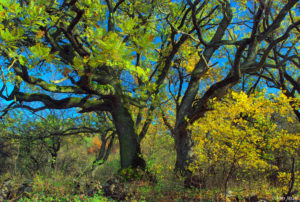General description of project area
Name of the project area: Pécsely
Surface area (ha): 15.330
EU protection status SPA: –
EU protection status SCI: NATURA 2000 Code BFHU 20014
Other protection status according to national or regional legislation: National Park
The main uses of the project site: The main land uses: Nature Conservation 60%, forestry 40%
The ownership status: Sate property 100%

Scientific description of project area
The Pécsey basin is one of the basins chain of the Balaton Upland. It has limestone bedrock and its climate is very little influenced by the Balaton. It is located about 300 m a.s.l. therefore it is suitable for 91G0 * Pannonic woods with Quercus petraea and Carpinus betulus forest which is covering about 40% of the area. However, along the rock outcrops there is 91H0* Pannonian woods with Quercus pubescens (30 %) and 91M0 Pannonian-Balkanic turkey oak –sessile oak forests (29%). On the hilltop the 91H0* Pannonian woods with Quercus pubescens was replaced by Pinus nigra in some places about 70 years ago. There had been economic forestry operation in the 91G0 * Pannonic woods with Quercus petraea and Carpinus betulus forest therefore it has 2-6 ha large parts which are homogeneous in stand, structure and age. Due to the earlier forestry activities the Quercus cerris extended more than naturally justified.
Characteristic plants are: Iris variegata, Ophrys apifera
Characteristic animals are:
- Mammals: Myotis blythii, Myotis myotis
- Birds: Dendrocopos medius, Dendrocopos minor, Dryocopus martius, Picus canus, Picus viridis
- Insect: Cerambyx cerdo, Eriogaster catax, Lucanus cervus, Morimus funereus
Importance of the project area for biodiversity and/or for the conservation of the species /habitat types targeted at regional, national and EU level
The project area is very important for the rehabilitation of the 91G0 * Pannonic woods with Quercus petraea and Carpinus betulus and 91H0* Pannonian woods with Quercus pubescens habitat which is an EU priority habitat according to Annex I. of the Habitat Directives. The forests need rehabilitation especially in those parts which became homogeneous due to former forestry activities. The restoration of the area will be an example in the region for other forest managers.
Flagship species in project area
Cephalanthera rubra, Sorbus domestica, Marumba quercus